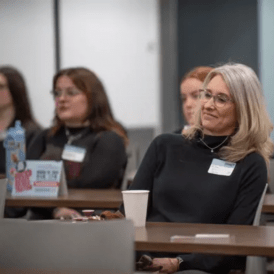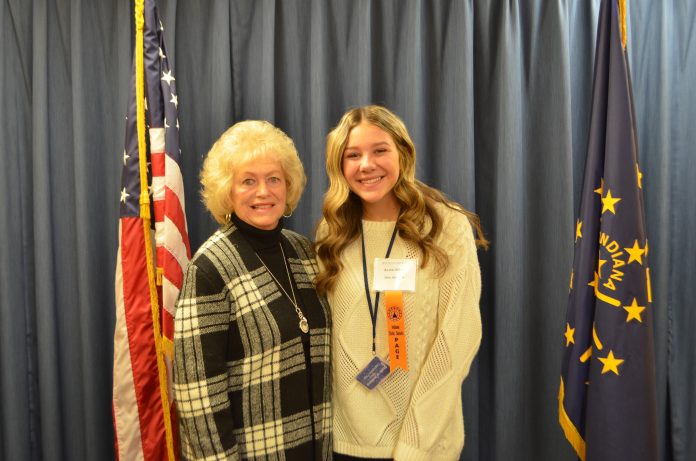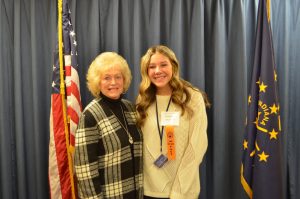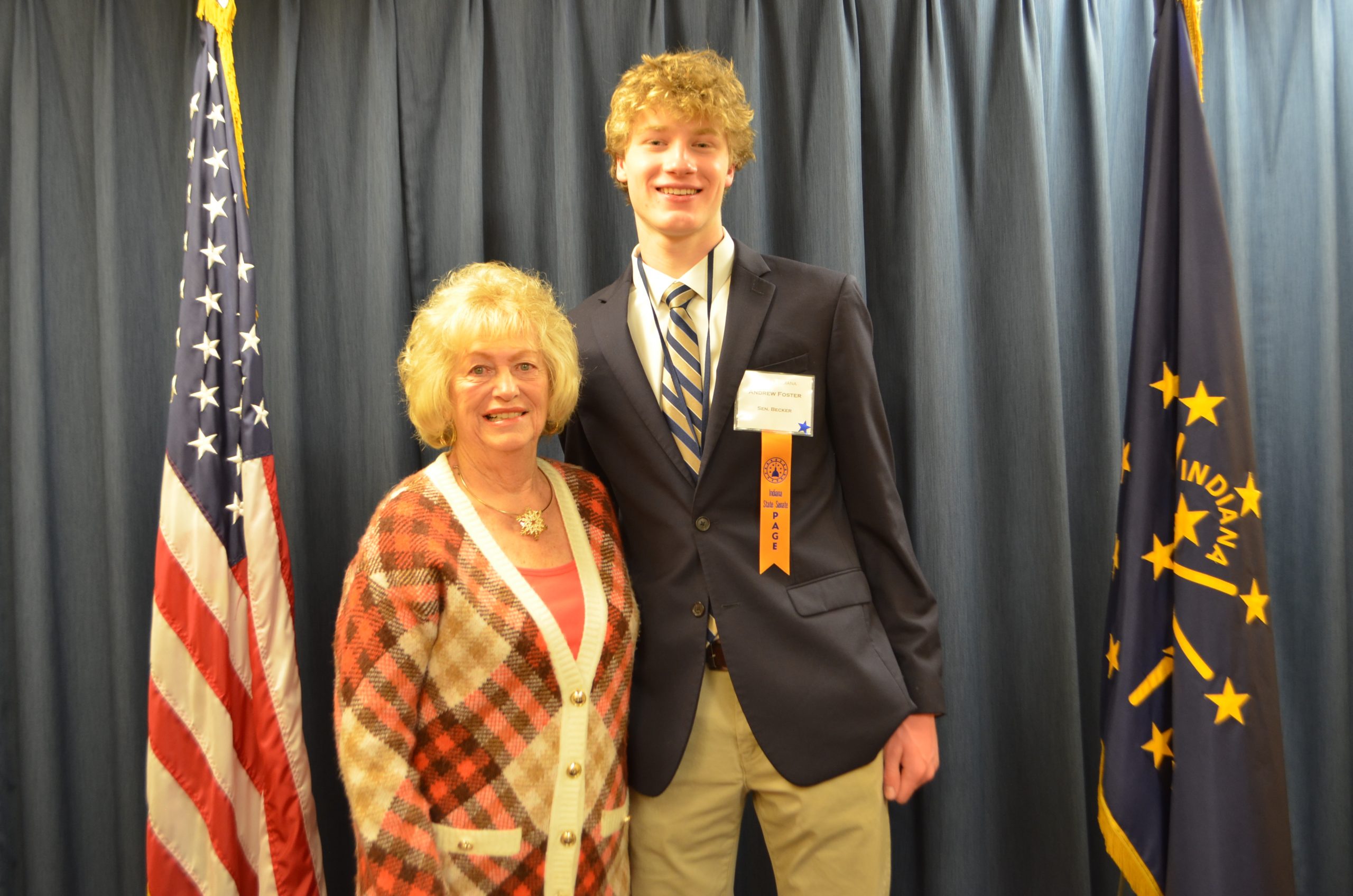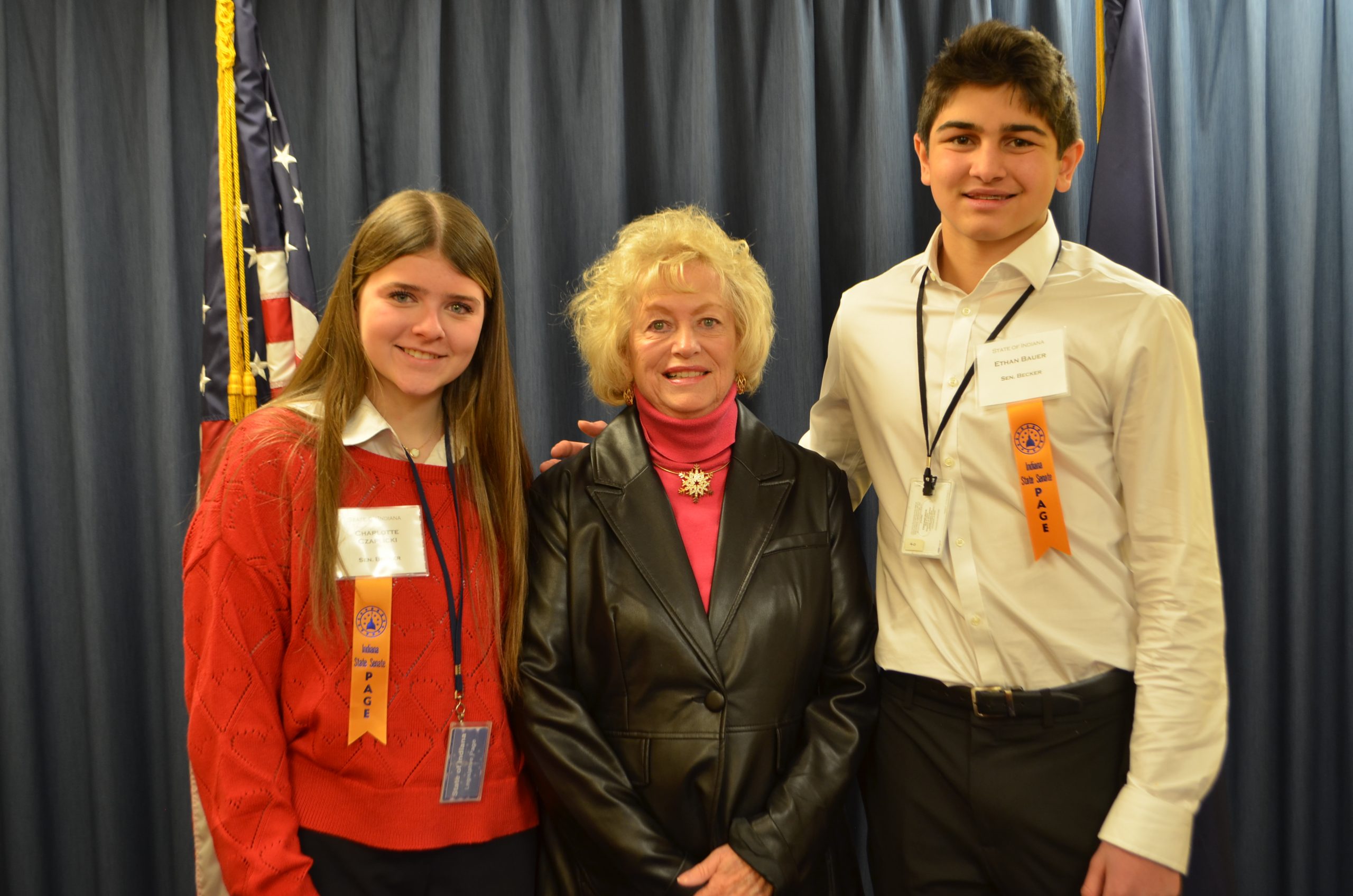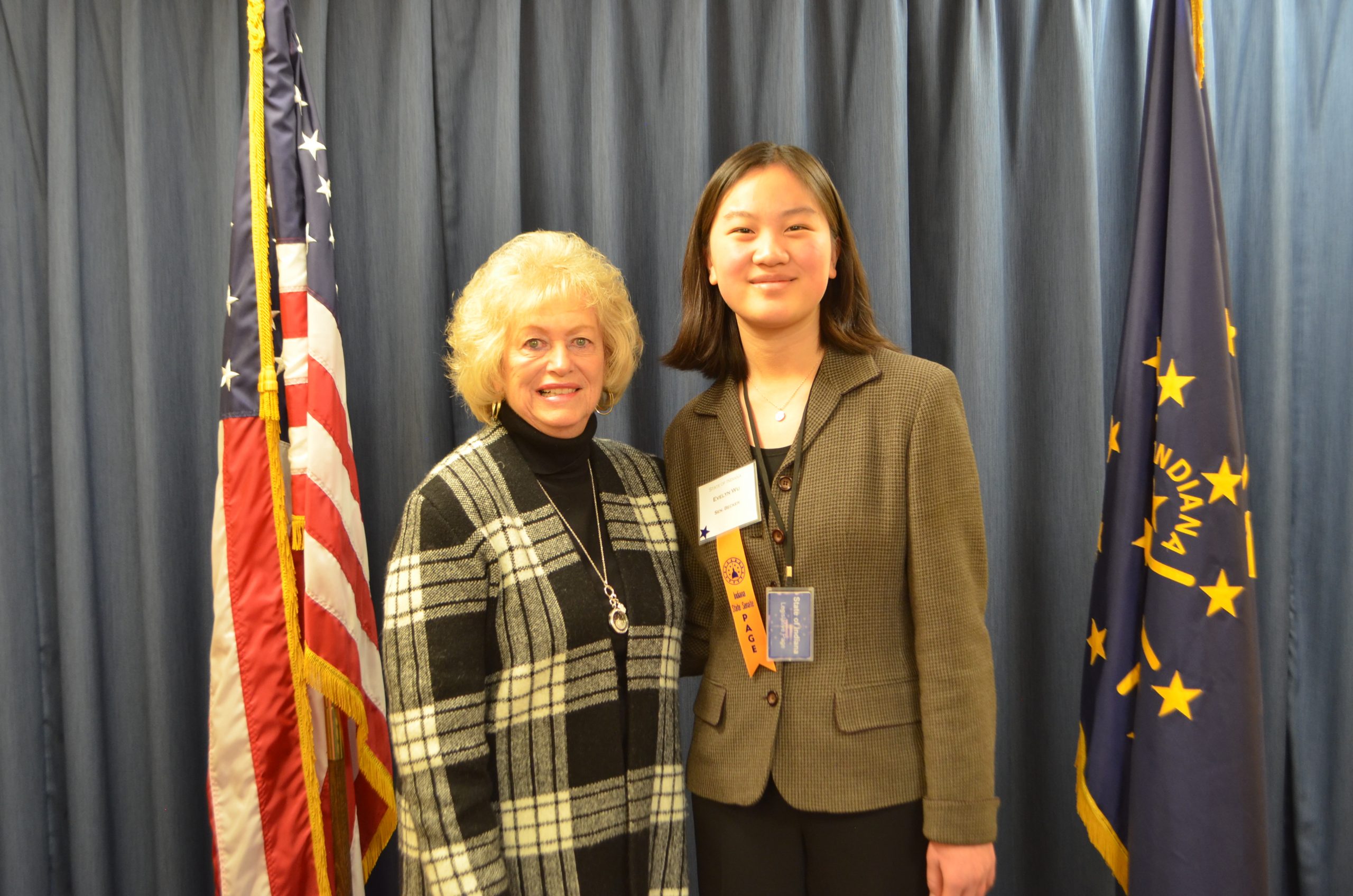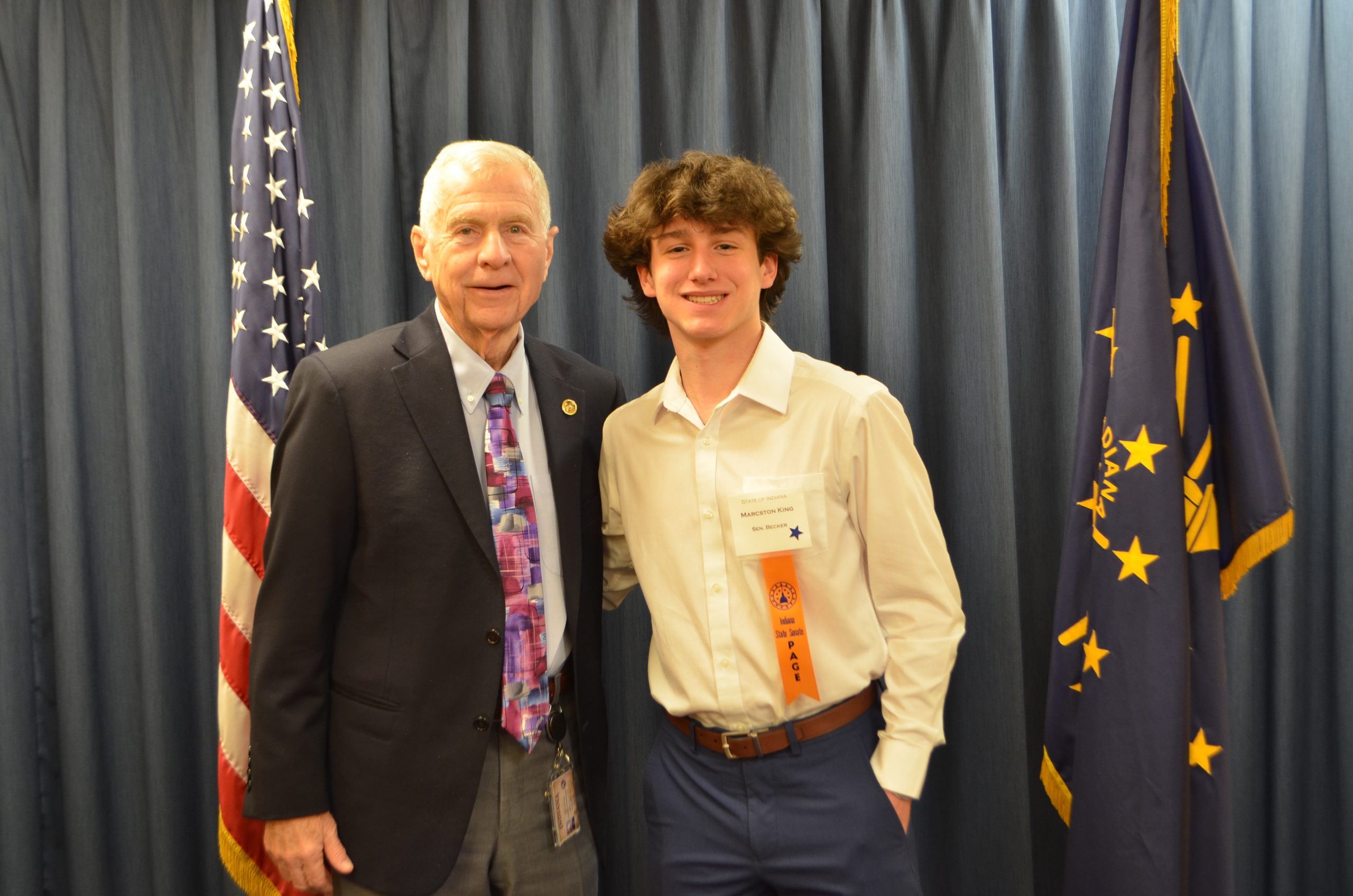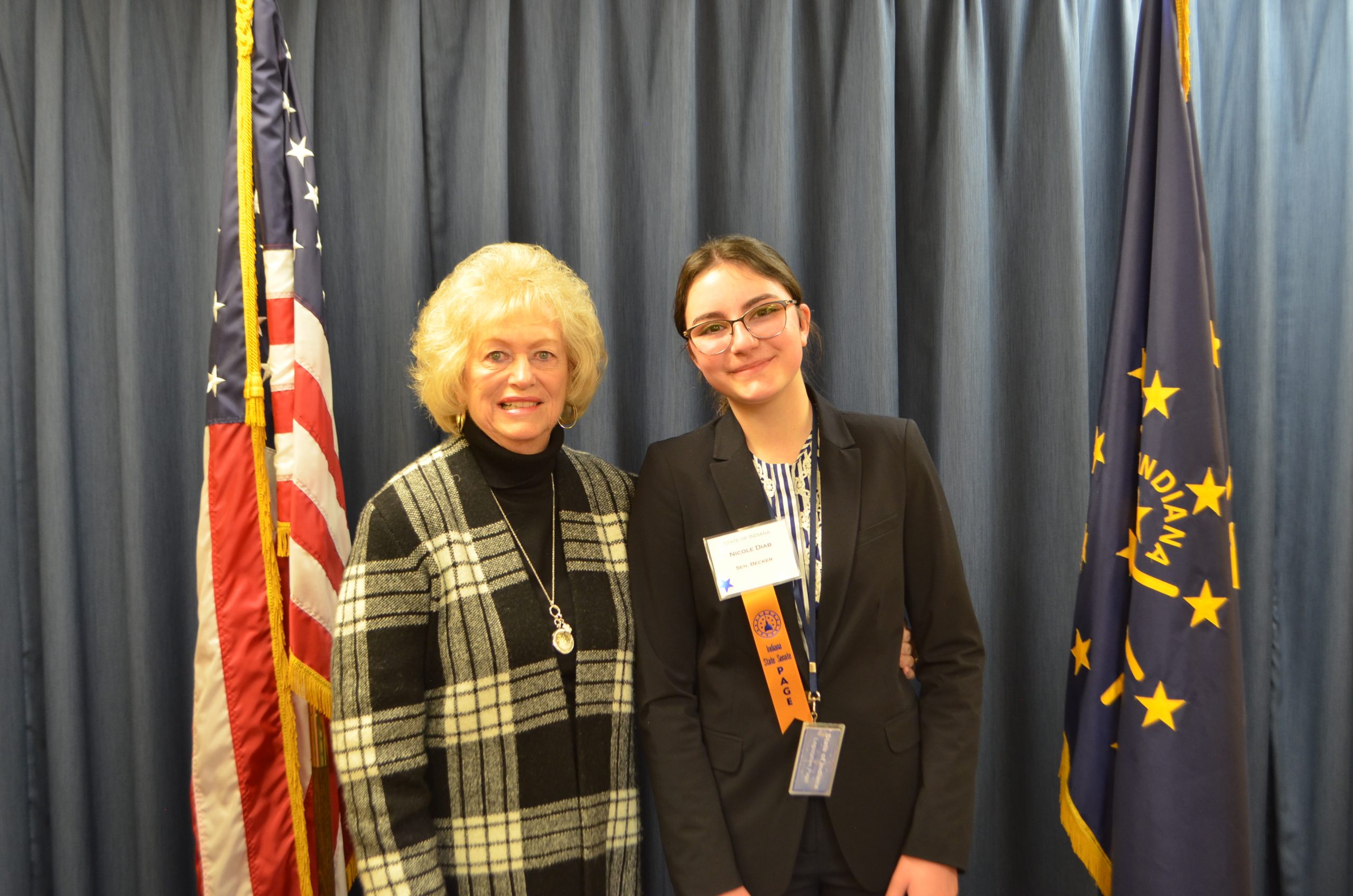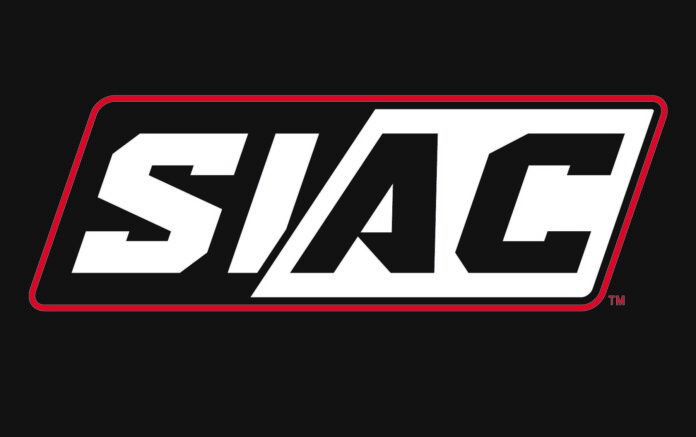OP-ED: Who is Moving Evansville’s Cheese?
Who is Moving Evansville’s Cheese?
By Jason Salstrom
February 27, 2025

For generations, Evansville’s economy ran on a strong foundation: factories produced, paychecks arrived, and families built their futures. Our “cheese”—the prosperity of stable industries—was secure. But just as electricity rewrote our way of life a century ago, AI, automation, and digital manufacturing are doing the same today, and it’s just the beginning. The shift is happening whether we acknowledge it or not. The only question that matters is: will we
act now and shape our future, or hem and haw, stuck, clinging to a disappearing past?
Our situation reminded me of Spencer Johnson’s classic business fable Who Moved My Cheese? The story is about four residents of a maze: two mice, Sniff and Scurry, and two little people, Hem and Haw. Every morning, the four headed out into the maze to get their
cheese, their livelihood, at the Cheese Station. Below is my adaptation, staying true to the spirit of the tale.
Cheese Station E was built during the last great shift in the maze, when electricity, the primary driver of the Second Industrial Revolution, changed how we worked, and where we lived, and triggered the growth of government.
In those days, the mice and the little people were more alike than they are today. Mice, being mice, were always on their toes, ever alert to any change, threat, or new opportunity. The little people, born at a time of change, had the pioneering culture of self-reliance to lean into a changing maze, learn, make hard choices, and adapt.
However, as time went by and the maze stabilized into the economy we know, getting cheese from Cheese Station E became a way of life. Mice, being mice, remained vigilant, ever ready for any disruption or new opportunity. Most of the little people, being little people, grew comfortable, even complacent, and developed beliefs to justify a sense of entitlement to their way of life.
One day, Sniff and Scurry began noticing that slight changes in the maze were multiplying. The corridors that brought skills and material into Cheese Station E and moved product out, once a miracle of efficiency, began slowly tilting against the flow of inputs and outputs. Productivity was in decline, as was the supply of cheese—the prosperity of stable industries.
In fact, Sniff and Scurry noticed changes multiplying across the maze. Some seemingly insignificant changes proved to be weak signals of change coming. Some change came out of nowhere. New corridors emerged, some steep, some dark, and old ones shrank, grew steep, or even sloped down to a sudden cliff.
The mice, being mice, remained vigilant, probing for threats to their well-being and new opportunities to prosper. Many of the little people, fearing the uncertainty, blamed others for the changing maze, expected the government to re-level the corridors back to their favor, and otherwise disregarded the accelerating change to the maze where their livelihood had long been found.
Sniff and Scurry were not surprised when Cheese Station E suddenly stopped producing cheese. They quickly moved on, having been probing the changes to the maze in their trial-and-error way.
Hem and Haw were unprepared. Hem protested, “Who moved my cheese?” Denial turned to anger, as he demanded that someone “make things right again.”
Haw, initially side-by-side with Hem, increasingly thought of the mice, always pioneers, reflecting on the enterprising spirit he once dismissed. But he still felt stuck. Much like America experienced a century ago, uncertainty, anxiety, and fear drove questions and fueled protests. “Why weren’t we warned?” “Why aren’t we prepared?” “Who’s responsible?” Mobs soon surrounded City Hall, until the mayor emerged and pointed her finger down Main Street at the office where decades of economic development strategic plans sat on shelves collecting dust.
The pointing of fingers may soon begin. The future of Cheese Station E is at a turning point, actually unprecedented, due to the never-before-seen rate of technology-driven change to the maze. The many hundreds of thousands, if not millions of dollars in “strategic plans” sitting on shelves (no Return On Investment) sit there collecting dust largely because the business model of consultants is incompatible with solving complex challenges.
Lots of data from government websites or other sources made pretty, is largely useless. Given that it is backward-looking, it often fuels biases, false assumptions, and strategic blind spots.
Strategic (enabling) management systems are what is needed. For this, we must start with clarity on the actual living system whose assets, capabilities, and constraints interact to shape outcomes here every day.
What are the enabling and inhibiting factors shaping outcomes, today? What is or is not possible to change today? What is or is not easier to change, today? Where are we vulnerable and where are we feeling the pressure to change today?
Understanding this is what informs us where to start to create the desired outcomes for tomorrow. In other words, given the state of the maze, what could we actually do? What should we do? What will we do? Then, measure progress. Monitor for change. Learn. Adapt. Prosper.
Strategic management is necessarily agile, constantly sensing and making sense of change. Instead of hiring another consultant to “create” (pay them to repurpose) another strategic plan or roadmap—that fails to inform even the first step—we need to start by accepting the fact that five-year plans and roadmaps are only useful when the destination in known; for example specs for roads and bridges are largely known, as well as segments of energy (2030 is 60-80% knowable), automaker supply chains (50-70% knowable), and Healthcare (40-60% knowable). The unknowable percentage is being disrupted by 2030.
Like a century ago, the “pioneers” among us must lead the way. Necessity is the mother of invention. Small (safe-to-fail) experiments (opportunities) emerge out of real understanding of our living ecosystem (especially its constraints)—the maze on which our well-being depends.
Effective experiments are developed into pilots, some of which are developed into new economic assets that establish a competitive advantage for regional industry and workers—a cheese station that adapts to an evolving maze as a feature of its operating system. The challenges are complex. Five-year plans to address “complex” challenges, fail. But the consultant will point his finger at you, “failed execution.” It is a mismatch of a strategic approach.
A complex challenge is when you are building toward an uncertain outcome; critical future specs are unknown, like raising a kid, moving to a new country, launching a new product, or integrating AI into your value chains. This necessarily requires an agile approach and must be developed internally.
A merely complicated challenge is like building a car, requiring special expertise, but you are building something that was designed in the past, can be disassembled and reassembled, and can continue to be what it was designed to be perpetually (being a contained, ordered system)—even if suddenly obsolete.
A social-economic-political-workforce-industrial system is not complicated, it is complex, and, like a teenager, is best developed indirectly by shaping the maze shaping their future.
The complexity we face is made exponential by the added complexity of emerging, cascading, recombining technologies changing everything—whether we like it or not.
A century ago, electricity combined and recombined with steel, petroleum, and the telegraph, to remake society, the economy, and government—our maze. Henry Ford dominated because he led in leveraging four of the five transformational technologies of the day, enabling everything from mass production to vertical integration—and 5X wages. Corporations that did not, fail.
Henry Ford collaborated with other leaders to shape their maze into an ecosystem that enabled adaptation and innovation. Activating an ecosystem takes leadership. “When everybody boosts everybody wins,” repeated Mayor Benjamin Bosse as he rallied
Evansville’s pioneers as they adapted to the Second Industrial Revolution and shaped the maze on which we prospered for generations.
Today, in the near term, AI and automation alone will impact the US manufacturing base at a pace faster than any mass industrial shift in history. The cliff is coming for Hem and Haw. The impact of emerging technologies is hard to imagine given the exponential unknowable
unknowns—and Quantum Computing and Fusion Energy may be around the corner. Decades of transformation comparable to the Second Industrial Revolution may be compressed to years—for the places that survive.
A century ago, it took decades for emerging technologies to affect most Americans. Today, ChatGPT had one million users in 5 days, one hundred million in 2 months, with AI already transforming every industry—whether Hem and Haw are paying attention or not. In Who Moved My Cheese? Haw eventually realizes, “The quicker you let go of old cheese, the sooner you find new cheese.” Strategy is about hard choices. Hem is left to his fate. Like a century ago, we face social, economic, and political disruption. The question is not who moved our cheese, but who is leading our adaptation to the new maze?
Evansville still has opportunities where we can lean in and prosper. Our manufacturing cluster, logistics infrastructure, and healthcare systems can leverage emerging technology to give us an edge—if we act now and “everyone boosts.” Regional leaders must lead by creating the conditions to collaboratively develop new models of workforce re-training, and scaffolding to enable the leveraging of Industry 4.0, AI, blockchain, etc., etc., etc., and ensure that we are ahead of the curve on building the enabling infrastructure.
Chasing what other places did a decade ago will only slow our pace, in the fog, to a sudden cliff. Those ahead of the curve on electricity dominated for a century. It is time to make hard choices before we have no choices to make.
The future belongs, once again, to the pioneers making the most of what the maze affords them. Evansville, who is leading the way?
FOOTNOTE: Jason Salstrom works at the intersection of strategy and technology, helping organizations shape the maze. https://www.linkedin.com/in/jsalstrom
BREAKING NEWS: New Bill Would Force Deaconess and Ascension to Reduce Prices
New Bill Would Force Deaconess and Ascension to Reduce Prices
One of the bills introduced in this legislative session will crack down on nonprofit hospitals that exploit their tax-exempt status while charging some of the highest prices in the country.
HB 1004 would strip nonprofit status from hospitals that charge more than 200% above what Medicare pays for services.
Devin Anderson, a board member of Hoosiers for Affordable Healthcare, applauded the bill, calling it a bold move to address Indiana’s ninth-highest hospital prices in the nation.
“HB 1004 puts real teeth into the effort to hold nonprofit hospitals accountable for the 9th highest prices while having billions in cash reserves,” said Anderson. “This bill sends a clear message from the Indiana House of Representatives Leadership: Lowering prices is not optional—a demand on behalf of the Hoosiers they represent who can’t afford skyrocketing prices from hospitals who masquerade as nonprofits.”
Indiana’s Big Five Hospitals Face Major Price Cuts
The bill, authored by Representative Martin Carbaugh (R-Fort Wayne) and co-authored by Representatives Ben Smaltz (R-Auburn) and Julie McGuire (R-Indianapolis), would force major price adjustments in healthcare. In the Evansville area, Ascension St. Vincent would need to reduce prices by 40.5%, and Deaconess Health System would have to reduce prices by 23%.
“Nonprofit hospitals have enjoyed tax exemptions for years, yet many are charging more than triple what Medicare pays for the same services,” said Anderson. “HB 1004 forces these hospitals to decide—either behave as a nonprofit hospital by lowering your prices or lose the benefits of nonprofit status.”
Key Provisions of HB 1004
Nonprofit Status at Risk: Hospitals charging over 200% of Medicare rates will lose their nonprofit status.
Stricter Community Benefit Standards: Limits what hospitals can claim as community benefits to justify their tax exemptions.
Mandatory Transparency: Hospitals must disclose pricing data compared to Medicare rates and make unredacted Form 990 Schedule H publicly available.
Annual Audits: Nonprofit hospitals will face yearly audits by the Secretary of State to verify compliance.
“This bill is a wake-up call for Indiana hospitals: stop exploiting Hoosiers, or lose your nonprofit status. It’s that simple,” said Anderson.
USI School of Graduate Studies spotlighting workforce and career development
The University of Southern Indiana is proud to announce the Graduate Student Colloquium, an annual event celebrating the innovative research and scholarly achievements of current and former graduate students.
The colloquium will take place Wednesday, March 19 at Roeder Traditions Lounge in University Center East, providing a platform for students to present their research findings to faculty, peers and the broader academic community. Presentations will also be available virtually.
Hosted by the School of Graduate Studies, the colloquium is in its eighth year of bringing intellectual exchange to the community, focused on the unique needs and motivations of adult learners and career professionals. This year’s topic will focus on how a graduate education supports career success and improves workforce navigation.
“The upcoming Graduate Student Colloquium is a testament to the thought leadership and innovation that define our students and alumni,” says Dr. Michael Dixon, Dean of the School of Graduate Studies. “This event will highlight emerging trends in workforce development and showcase meaningful advancements in graduate studies and professional opportunities.”
The event is open to the public, and attendees will have the chance to explore new offerings in continuing education, career enhancements and ways to maintain a competitive edge in today’s dynamic workforce. Participants will have the opportunity to share their experiences through in-p
This Saturday – Meeting & Party Reorganization
|
|||||||||||||||||||||||||||||||||||||||||||||||||||||||||||||||||||||||||||||||||||||||||||||||||||||||||||||||||||||||||||||||||||
|
|||||||||||||||||||||||||||||||||||||||||||||||||||||||||||||||||||||||||||||||||||||||||||||||||||||||||||||||||||||||||||||||||||
CenterPoint Energy launches 2025 Integrated Resource Plan process
Evansville, Ind. – CenterPoint Energy’s Indiana electric business launched its 2025 Integrated Resource Plan (IRP) process, which will assist the company in setting its long-term strategy for electric generation and power needs for its 150,000 customers in southwestern Indiana. The IRP process, which takes place every three years, includes an analysis of electric generation options and involves a comprehensive stakeholder engagement component.
While evaluating Indiana’s future power generation needs through this process, CenterPoint remains committed to providing reliable energy using dispatchable and renewable generation as it transitions to a diverse energy portfolio. The new Posey County 191 MW solar array and A.B. Brown’s new 460 MW natural gas-fired generation are targeted to be operational in 2025.
The company plans to continue operating F.B. Culley Generating Station Unit 3 using coal through 2027. This approach provides time to evaluate future generation needs and the energy mix. It also considers the affordability impact of electric customers’ bills and supports increasing energy demand in the region.
“We are excited to continue addressing our customers’ energy needs by bringing new, diverse generation resources online as part of CenterPoint’s long-term transformation in southwestern Indiana,” said Shane Bradford, Vice President of Indiana Electric. “Pausing the Culley Unit 3 conversion from coal to natural gas lets us reassess long-term energy solutions while balancing affordability and reliability. Our upcoming IRP will involve a comprehensive review of generation resources for the next 20 years.”
CenterPoint remains focused on meeting customers’ energy needs while adapting to evolving market and regulatory conditions. Through the IRP process, the company will evaluate strategies to support long-term reliability, affordability, resiliency, sustainability and regional growth while considering market trends and system needs. As part of this effort, the company will continue working with stakeholders to assess its generation mix and potential future needs of renewables, natural gas infrastructure and grid modernization.
CenterPoint will host a series of public stakeholder meetings in 2025 to provide updates and gather input:
· Public stakeholder meeting #1 – March 19, 2025
· Public stakeholder meeting #2 – May 14, 2025
· Public stakeholder meeting #3 – July 23, 2025
· Public stakeholder meeting #4 – Sept. 23, 2025
Sen. Becker welcomes local students to Statehouse
Sen. Becker welcomes local students to Statehouse
STATEHOUSE (Feb. 26, 2025) – State Sen. Vaneta Becker (R-Evansville) welcomed the following local students to the Statehouse who served as Senate pages in January and February.
- Ethan Bauer, from Newburgh, attends Reitz Memorial High School
- Charlotte Czaplicki, from Newburgh, attends Reitz Memorial High School
- Nicole Diab, from Newburgh, attends Signature School
- Ella Clare Engbers, from Evansville, attends Holy Rosary Catholic School
- Andrew Foster, from Evansville, attends Reitz Memorial Catholic High School
- Marcston King (pictured with State Sen. Ed Charbonneau (R-Valparaiso)), from Boonville, attends Boonville High School
- Alice Meny, from Newburgh, attends Castle High School
- Evelyn Wu, from Newburgh, attends Signature School
Pages spend a day at the Statehouse touring the historic building, observing debates from the Senate floor and interacting with their state senator.
“Being a Senate page is a wonderful opportunity for Hoosier students to learn firsthand how our state government operates,” Becker said. “I enjoy meeting with local students who traveled all the way to the Statehouse to experience the legislature up close, and I encourage all eligible students to take advantage of this program.”
Students in grades six through 12 participate in the page program on Mondays, Tuesdays and Thursdays during the legislative session. Groups serve on Wednesdays.
AMR Evansville Advances Cardiac Arrest Survival Strategies During National Heart Mont
A Leader in Advanced Resuscitation Techniques and Community Education
EVANSVILLE, Ind. (Feb. XX, 2025) — As the nation observes National Heart Month, AMR Evansville, a
division of Global Medical Response, highlights its commitment to improving cardiac arrest survival
through evidence-based protocols, data-driven resuscitation methods and community CPR training. AMR
Evansville has consistently surpassed national benchmarks in return of spontaneous circulation and
neurologically intact survival rates, reinforcing its role as a leader in emergency cardiac care.
Outperforming National Survival Rates
AMR Evansville has consistently surpassed national benchmarks in cardiac arrest survival. Return of
circulation rates are 10.8% higher than the national average, with strong outcomes in neurologically intact
survival.
“While a 10% improvement may seem modest in the broader scope, it represents lives saved that
otherwise may not have had a chance. For families, it’s everything,” said Critical Care Paramedic, and
Operations Manager Lee Turpen at AMR Evansville.
A lasting testament to this success is the Tomorrow Wall,
which honors caregivers who provided care to the
individual who was successfully resuscitated. Since its
creation in 2019, the wall has steadily grown, reflecting the
organization’s dedication to saving lives through advanced
prehospital care.
“The Tomorrow Wall is more than just numbers and
statistics. It is a wall of second chances,” said Turpen.
“Every plaque represents a life that could have been lost but was not, thanks to the relentless work of our
crews and the science backed care we provide on every call.”
Relentless innovation in resuscitation
AMR Evansville follows a data driven approach to cardiac arrest care, continuously refining protocols
based on research from the National Association of EMS Physicians, the Cardiac Arrest Registry to
Enhance Survival and the U.S. Metropolitan Municipalities EMS Medical Directors Consortium. These
cutting-edge resuscitation methods include:• Evidence based defibrillation techniques that increase survival in patients with shockable
rhythms.
• Carefully refined medication protocols based upon data that improve brain function and long-term
recovery.
• Real-time CPR monitoring optimizes chest compressions for maximum effectiveness.
• Extended on scene resuscitation, with a focus on high quality CPR and time-sensitive treatment
before transport, significantly increasing survival rates.
“We do not simply follow guidelines. We challenge them with real world data,” said Turpen. “Our approach
is not about what has always been done. It is about what works. The numbers prove it, and more
importantly, the lives saved prove it.”
National recognition for cardiac care
AMR Evansville’s success in improving cardiac survival has been recognized nationally through the
American Heart Association’s Mission Lifeline program. For the past decade, AMR has been awarded:
• 2024 Gold Award with Heart Attack Honor Roll, the highest distinction available.
• Gold Plus status from 2017 to 2023.
• Recognition for excellence in ST elevation myocardial infarction (STEMI) and cardiac arrest care
since 2014.
These honors reflect years of relentless work, research and commitment to providing the highest
standard of care for cardiac arrest patients.
Empowering the community through CPR training
While cutting edge protocols and highly trained paramedics make a difference, bystander CPR is the first
critical step in saving lives. AMR Evansville is committed to ensuring that more people in the community
are prepared to act in a cardiac emergency.
The AMR Evansville CPR Training Center offers hands on, certified CPR training to the public, equipping
individuals with the skills needed to take immediate action in a life-threatening emergency. Each year,
AMR trains approximately 1,250 people through partnerships with local fire departments, industries and
medical offices.
“Increasing bystander CPR is one of the most powerful tools we have in improving survival rates,” said
Turpen. “The first few minutes after a cardiac arrest are critical. A trained bystander can make the
difference between life and death.”
CPR training is available to the public. To learn more or to register for a class, call 812-421-6500.
A future of lives saved
As National Heart Month raises awareness of cardiac health, AMR Evansville remains at the forefront of
lifesaving innovation, community education and emergency response.
Through data driven resuscitation methods, expanded CPR training and a commitment to excellence,
AMR Evansville continues to push the boundaries of what is possible in prehospital cardiac care.
In a cardiac emergency, every second counts. Every life saved is not just a number. It is a family reunited, a tomorrow that was not promised but made possible.
EPD DAILY ACTIVITY REPORT
FOOTNOTE: EPD DAILY ACTIVITY REPORT information was provided by the EPD and posted by the City-County-County Observer without opinion, bias, or editing.
2024-2025 SIAC ALL CONFERENCE GIRLS BASKETBALL TEAM
FIRST TEAM
PLAYER GRADE SCHOOL
Myla Browning 12 Memorial
Bailey Hape 11 Reitz
Carlee Rogers 12 Jasper
Jayden Scott 11 Castle
Maddy Shirley 11 Central
Mya Skelton 12 Central
SECOND TEAM
PLAYER GRADE SCHOOL
Libby Blythe 12 North
Rylee Canaan 10 Memorial
Izabell Grantz 11 Castle
Avery Kelley 12 Central
Kaelyse Mitchell 12 Reitz
Jordan Scott 12 Castle
PLAYER OF THE YEAR
Maddy Shirley, Central
COACHES OF THE YEAR





